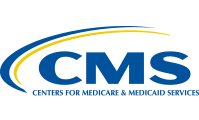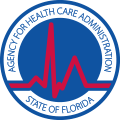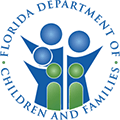What is Substance Abuse
Understanding Substance Abuse
Substance abuse is the harmful and/or hazardous usage of psychoactive substances such as alcohol and illegal drugs. Psychoactive substances can lead to dependence upon the substance and cause a variety of cognitive, behavioral, and physiological changes after chronic usage of a substance. These include strong drug cravings and desire to do the drug despite the negative consequences in one’s life, drug usage becomes a higher priority than other activities and obligations, increase in tolerance for the drug, and physical withdrawal state when drug use is abruptly cut down or terminated.
It can be challenging to understand why and how some individuals become addicted to drugs and is often assumed that people who abuse drugs simply lack proper morals or willpower; they can stop using if they’d really desire this. However, reality states that drug addiction is a complex disease and quitting the usage of drugs requires more than a desire or strong will. Usage of substances change the brain in ways that promote compulsive drug abuse which makes quitting a challenge, even for people who are ready to quit. Through much research and advancement, we’ve learned that drug addiction is a treatable condition that can successfully help people stop abusing drugs and go on to live happy, productive lives.
There are a number of types of drugs that are readily abused. These categories of drugs produce different effects and are abused in different manners. The most common categories of drugs of abuse include:
Marijuana (also known as “grass,” “pot,” and “weed”) is the most common drug of abuse in the United States. It can be smoked or swallowed to produce feelings of euphoria, impaired memory and coordination, and distorted sense of reality.
Narcotics and opiates include heroin, prescription painkillers, and opium and can be injected, smoked, snorted, or swallowed to lead to feelings of euphoria and relaxation as well as an overall sense of well-being.
Stimulants including cocaine (“coke”), amphetamine (“uppers”) and methamphetamine (“meth”) can be snorted intranasally, injected, smoked, and swallowed to produce feelings of increased energy and mental acuity.
Hallucinogens and dissociative drugs are also known as psychedelics and include PCP, LSD, peyote, ecstasy, ketamine, and psilocybin. These drug cause changes in sensory and thought perceptions and can be swallowed, absorbed through oral mucosa and smoked.
Inhalants, including solvents (such as gasoline and glues), aerosols (spray paint), gasses (propane, butane), nitrous oxide, nitrates (poppers) are chemicals that cause intoxication when sniffed or inhaled (a process often known as “huffing”).
CNS Depressants and downers are drugs that slow down the central nervous system and include tranquilizers, barbiturates, benzodiazepines, GHB, and Rohypnol. These drugs cause relaxation and sedation.
Statistics
Statistics of Substance Abuse
Worldwide, at least 15.3 million people struggle with drug use disorders. IV drug abuse is reported in 148 countries, of which 120 countries report increased amounts of HIV/AIDS infection among this population.
In the United States, illegal drug use has been on the rise. In 2011, about 22.5 million people in the U.S. (or 8.7% of the population) had abused an illegal or psycho-therapeutic drug in the previous month.
Causes of Substance Abuse
What are the Causes of Substance Abuse
No one single factor can determine whether or not a person will become addicted to drugs. The causes for addiction involve the influence of a combination of factors working together to create an atmosphere of abuse. The more risk factors an individual has, the greater the chance they will develop an addiction.
Genetic: Our inborn genes combined with environmental influences account for approximately half of addiction vulnerability.
Physical: Drugs contain certain chemicals that use the brain’s communication system and disturb the ways in which nerve cells normally send, receive, and process information. The longer a person abuses drugs, the more likely that the drugs will cause lasting damage to this system and may lead to the body reducing the naturally occurring neurotransmitters (the brain’s way of communication), causing a physical dependence upon drugs.
Environment: People who begin to experiment with drugs at an earlier age are at an increased risk for developing an addiction later in life. In addition, peer relationships in which drug use is prevalent can lead to experimentation with drugs of abuse. Others will find that drugs of abuse temporarily alleviate some of the unpleasant stresses associated with life.
Risk Factors:
- History of physical or sexual abuse
- Lack of parental supervision and involvement
- Poverty
- Poor social skills
- Availability of drug
- Aggressive behaviors
Signs and Symptoms of Substance Abuse
Learn More About the Signs and Symptoms of Substance Abuse
The symptoms of drug abuse will vary depending upon the substance of abuse, the frequency of use, genetic makeup, length of use, and presence of physical dependence. Symptoms of common drugs of abuse follow:
Marijuana:
- Euphoria and relaxation
- Impaired reaction time
- Distorted sensory perception
- Impairment in balance, coordination, and memory
- Increased heart rate and appetite
- Decreased ability to concentrate and learn
- Anxiety and panic attacks
- Psychosis
- Cough
Opiates:
- Drowsiness and dizziness
- Euphoria
- Impaired memory and increased confusion
- Syncope
- Sensation of heaviness in extremities
- Respiratory depression and arrested breathing
Stimulants:
- Tachycardia
- Hypertension
- Hyperthermia
- Increased metabolism and decreased appetite
- Feelings of exhilaration and increased energy
- Increased mental acuity
- Tremors
- Irritability
- Anxiety, panic attacks
- Paranoia
- Violent, erratic behaviors
- Psychosis
Hallucinogenic and dissociative drugs:
- Altered states of perception and total disorientation
- Nausea, vomiting, diarrhea
- Panic attacks and increased anxiety
- Increased heart rate, body temperature, and blood pressure
- Insomnia
- Tremors
- Impulsive behaviors
Inhalants:
- Brief intoxication
- Loss of inhibition
- Nausea and vomiting
- Syncope
- Headache
- Impaired motor coordination
- Loss of memory
- Weakness and fatigue
Depressants and downers:
- Decreased anxiety
- Overall feelings of relaxation and well-being
- Lowered inhibitions
- Drowsiness and fatigue
- Decreased respiration and heart rate
- Depression
- Confusion and disorientation
- Slurred speech
- Impaired coordination
- Impaired memory and judgment
Effects of Substance Abuse
Understanding the Effects of Substance Abuse
The long-term effects of substance abuse will vary based upon the type of substance abuse, presence of other health-related conditions, frequency of use, poly-drug use, genetic makeup, and length of drug abuse. The most common effects of drugs of abuse are grouped by substance of abuse:
Marijuana:
- Frequent respiratory infections
- Decline in mental health
- Addiction
- Increased risks for cancer
Opiates and narcotic drugs:
- Addiction
- Collapsed veins
- Septicemia
- Abscess at injection site
- Fatal overdose
- Hypotension
- Decreased respiration rate
- Mood swings
- Constipation
- Endocarditis
- Hepatitis B and C
- HIV/AIDS infection
- Coma
- Death
Stimulants:
- Psychosis
- Malnutrition
- Insomnia
- Cardiac and cardiovascular complications
- Stroke
- Heart attack
- Seizures
- Addiction
- Nasal perforation
- Severe dental problems (“meth mouth”)
Hallucinogenic and dissociative drugs:
- Flashbacks
- Intrusive thoughts
- Consequences of impulsive, risky behaviors
- Continuing hallucinations
- Memory loss
- Cardiac complications
- Liver damage
- Violent, erratic behaviors
- Break with reality
Inhalants:
- Seizures
- Delusions
- Confusion and disorientation
- Loss of consciousness
- Memory impairment
- Damage to cardiovascular and nervous system
- Coma
- Seizures
CNS depressants and downers:
- Amnesia
- Hypotension
- Decreased respiration rate
- Tolerance
- Withdrawal
- Addictive
- Consequences of risk-taking behaviors
Effects of Withdrawal and Overdose
Learn More About the Effects of Withdrawal and Overdose
Each drug of abuse carries significant risks for withdrawal symptoms if the usage of the drug is habitual and overdose, especially when the drug is mixed with another type of drug.
Marijuana Withdrawal:
- Agitation
- Mood swings
- Insomnia
- Depression
- Nightmares, night sweats, and vivid dreams
- Anger
- Loss of concentration
- Headaches
Opiate Withdrawal:
- Chills and sweating
- Goosebumps
- Hypertension
- Muscle and bone pain
- Tremors and spasms
- Anxiety and panic
- Nausea, vomiting, diarrhea
- Tachycardia
- Irritability, agitation, restlessness
- Insomnia
- Depression
- Suicidal thoughts and behaviors
Opiate Overdose:
- Miosis – constricted pupils
- CNS depression
- Ventricular arrhythmias
- Slowed, erratic, or stopped heart rate
- Acute mental status change, decreased response to stimuli
- Hypotension
- Decreased, erratic, sometimes absent respiration rate
- Cyanosis
- Pale, clammy skin
- Slurred speech
- Coma
- “Death rattle”
Stimulant Withdrawal:
- Agitation and irritability
- Depression
- Drug cravings
- Insomnia and fatigue
- Nausea and vomiting
- Tremors and chills
- Muscle pain
- Psychosis
Stimulant Overdose “overamping”:
- Nausea and vomiting
- Passing out
- Tightening in chest or chest pain
- Hyperthermia
- Chills and profuse sweating
- Tachycardia
- Erratic breathing
- Seizures
- Stroke
- Paralysis
- Heart attack
- Extreme anxiety, panic, agitation, aggression, restlessness
- Hallucinations
- Paranoia
Hallucinogenic and Dissociative Withdrawal:
- Cravings
- Fatigue
- Irritability
- Anhedonia
- Suicide
Hallucinogenic and Dissociative Overdose:
- Acute psychotic behavior
- Psychotic break
- Hallucinations
- Self-injury or suicide attempts
- Tachycardia
- Tachypnea
- Agitation and anxiety
Inhalant Withdrawal:
- Nausea and vomiting
- Headache
- Anxiety and irritability
- Syncope
- Depression
- Cravings for the drug
Inhalant Overdose:
- Sudden heart failure
- Hypoxia
- Coma
- Cardiac failure
- Sudden sniffing death syndrome
CNS Depressants Withdrawal:
- Insomnia
- Anxiety, agitation, and irritability
- Headache
- Loss of appetite
- Tachycardia
- Seizures
CNS Depressants Overdose:
- Increased risk of death when combined with alcohol
- Dizziness
- Anxiety and agitation
- Confusion and drowsiness
- Diplopia and nystagmus
- Unresponsiveness
- Coma
- Hypotension
- Amnesia
- Ataxia, weakness and hypotonia
- Paradoxical agitation
- Respiratory depression
Co-Occurring Disorders
Treatment for Co-Occurring Disorders
Many people who abuse drugs also struggle with co-occurring mental health disorders. Some of the most commonly co-occurring disorders include:
- Depressive disorders
- Anxiety disorders
- Bipolar disorder
- Schizophrenia
- Alcoholism
- Polysubstance abuse
- Antisocial personality disorder











